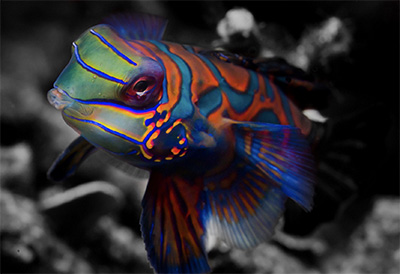Hobby pioneer Paul “Paul B” Baldassano is not your grandfather’s reefkeeper (though he is old enough to be your grandfather!). In fact, Paul B’s perspective on just about any aspect of the marine aquarium hobby is quite distinct from anyone else’s.
For proof that Paul has a decidedly different thought process, look no further than the following passage about mandarins and other dragonets from Chapter 7 of his book (which, by the way, would make a wonderful stocking stuffer for that slightly off-kilter hobbyist in your life):
Mandarins and Other Dragonets
Mandarinfish and all the other dragonets have the same problem—a tiny mouth and almost no stomach. Mandarins were designed to eat amphipods and copepods, or “pods” as we call them, but a mandarin will eat anything small that moves. I know many people try to “train” such a fish to eat pellets, potato chips, or frozen food, but dragonets hate you when you do that because all you are doing is slowly killing them.
Because of their weird digestive tract, which is something like that of a seahorse, they don’t have the ability to store food—kind of like when people get that surgery where they put a band around the stomach so they can’t eat as much. Mandarins were designed to eat all day long. They want to eat a pod every 10 seconds, and that pod continually gets digested in the silly tube they have for a stomach. That pod gives them the energy to swim to the next pod and not much else. You can give them a pellet and they may eat it, but if you want to keep them alive, you will have to give them a pellet every 10 seconds all day long.
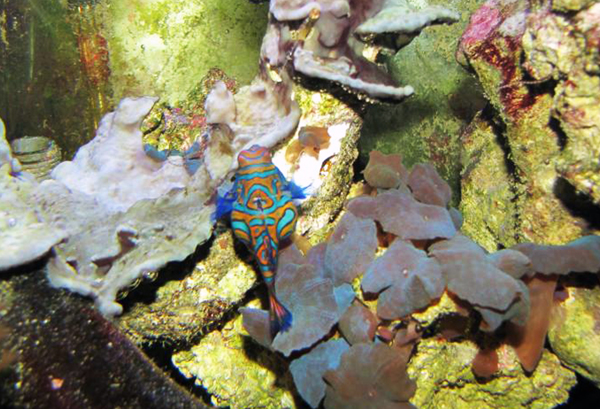
If you could read the mind of a mandarin, you might hear something like this: “OMG, I am so hungry! Oh, there’s one. Wow, that was good! I’m full. Hey, look at that interesting rock. I think I will grab something to eat on my way. Mmmm, good pod, but a little gamey. I thought I saw something blue. Yes, it’s a babe! She looks like a supermodel! Look at the tail on her! And those pectoral fins! Let me eat something then sashay my way over there and put the moves on her. Hey, beautiful, you want to get something to eat? Oh, you just ate? Okay, then maybe we can…Oh, now you’re hungry? I know a place that serves some great pods. There’s one! Okay, why don’t we go to…Wow, look at that worm! That is the nicest looking…Damn, that shrimp got to it first. Now we’ll probably starve to death. There’s another worm! Would you like some? I am so full I feel like I ate a seahorse. Let’s go to the…Damn, I am hungry!”
[Editor’s note: I’m relieved to see I’m not the only one who imagines conversations going on between fish!]
To me, mandarins are among the easiest, lowest-maintenance, most disease-resistant, and most beautiful fish there are, but so many people can’t keep them alive. You just need to feed them or have a tank that is not very sterile and has a good population of pods in it.
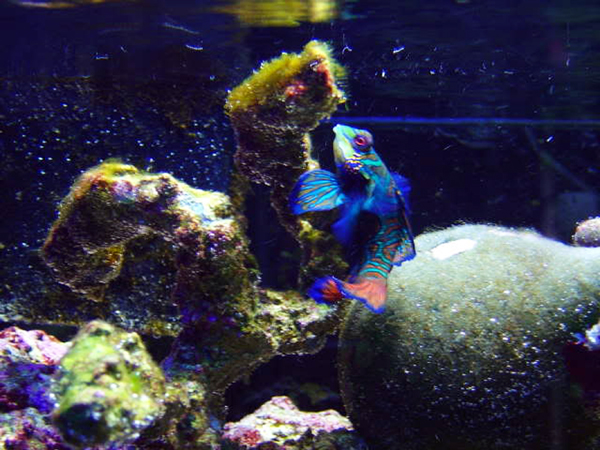
Notice the growth on the rocks in the photo above. That is my tank, and mandarins just love it. If you are one of those people who vacuum the substrate, pick up every bit of uneaten food, and starve the fish because you are worried about your water parameters, take up golf. Don’t get a mandarin. Mandarins don’t really care much about your water parameters; they want to eat. And the more food there is, the more pods there are and the better your mandarin will like you. In my tank, I have an automatic feeder that dispenses some pellets into the water. I don’t do that for the fish. I do it to feed the pods. Yes, the copepods and amphipods have to eat also.
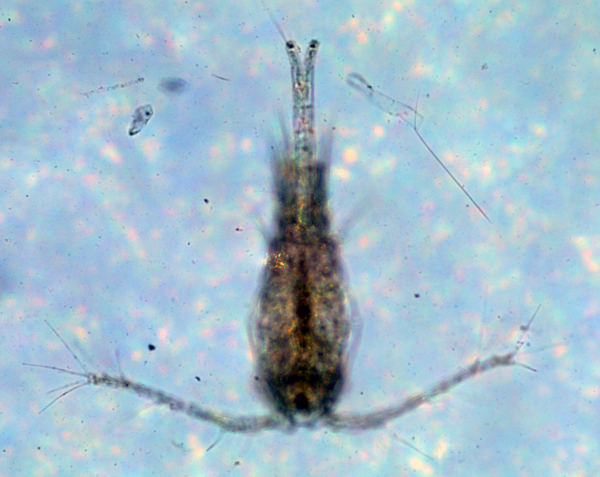
Keeping the substrate alive with pods is one way to keep a mandarin, but in addition to that, you can (and should) hatch brine shrimp every day. Newborn brine shrimp are, in my opinion, better for mandarins than real pods anyway. I say that because a pod is an adult animal with a shell while a newborn brine shrimp is a baby animal with a yolk sac. A yolk sac is a bag of oil containing everything necessary to grow a healthy brine shrimp or fish. Brine shrimp are most nutritious as soon as they are born, but they absorb the oil throughout their first day, so feeding them to your fish as soon as they hatch is best.
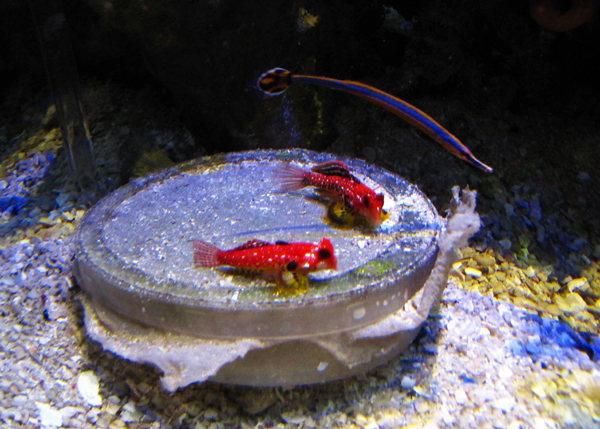
Feeding newborn brine shrimp to a mandarin is not as easy as dispensing the shrimp into the tank. That won’t work for a mandarin because mandarins are bottom feeders and rarely swim up to their food. Brine shrimp are attracted to light, so as soon as you put them in a tank, they swim towards the light and will congregate on the water surface and have a hoedown there as they get swept into your overflow and get lost. I devised a mandarin feeder (discussed in the DIY chapter) that keeps the shrimp at the bottom where the mandarins can suck them out all day long. The bottom line for mandarins is, if you can’t supply pods (or something resembling pods) all day long, don’t get one.
Dragonets also enjoy live worms. Live blackworms are eaten with gusto, but those worms only live a few seconds in salt water and the mandarin will not touch them after they die, so I like to use live whiteworms for them. Whiteworms are sold in a little damp soil as a starter culture. You then put them in a plastic shoebox with soil, keep it damp, and feed them dry instant mashed potato flakes or, for the Jewish worms, matzos. They are a little trouble to separate from the soil, but if you are lucky, they will clump on a piece of food and you can lift them out with a spoon (not a spoon you will be eating dinner with, mind you). The whiteworms will live for many hours in salt water, and mandarins go nuts for them.


